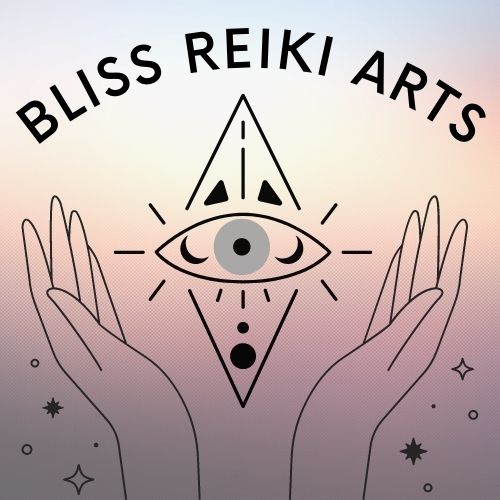In the world of holistic healing, sound therapy has emerged as a powerful tool to help individuals reconnect with their bodies, minds, and spirits. At Bliss Reiki Arts, we often incorporate the healing vibrations of tuning forks and chakra bowls into our Reiki sessions, creating a unique experience that amplifies the benefits of traditional energy healing. But what is the science behind sound healing, and how can these instruments enhance your Reiki practice? Let’s dive into the principles of sound healing, explore the benefits of different frequencies, and see how they can be integrated into a Reiki session to promote overall well-being.
What is Sound Healing?
Sound healing is a therapeutic practice that uses the vibrational frequencies of sounds to promote physical, emotional, and spiritual healing. The concept of using sound for healing dates back thousands of years and has been practiced in various forms across cultures, from Tibetan singing bowls to ancient Greek sound baths. In modern sound healing, instruments like tuning forks, gongs, singing bowls, and chakra bowls are used to produce specific frequencies that resonate with different parts of the body, mind, and spirit.
The idea behind sound healing is that everything in the universe, including the human body, vibrates at a particular frequency. When our body’s natural frequencies are disrupted—due to stress, illness, or emotional imbalances—it can lead to physical or emotional discomfort. By introducing harmonious vibrations through sound therapy, the body can realign with its natural state, promoting healing and balance.
The Science Behind Sound Healing
Sound healing is more than just a spiritual practice; it is grounded in scientific principles. At its core, sound healing leverages the power of vibrational frequencies and resonance to bring about therapeutic effects.
Resonance and Frequency Resonance refers to the natural frequency at which an object vibrates. Every part of our body has its own resonant frequency. For example, the heart, brain, and lungs each vibrate at different frequencies. Sound healing works by using external frequencies to interact with these natural vibrations. When a tuning fork or singing bowl is struck, it produces a frequency that can resonate with and influence the body’s own frequencies, encouraging them to return to their optimal state.
Brainwave Entrainment Sound healing can also induce brainwave entrainment, a process where the brain’s natural rhythms synchronize with the external frequencies being introduced. For example, listening to certain frequencies can shift the brain from a beta state (associated with stress and alertness) to an alpha or theta state (associated with relaxation and meditation). This shift allows the body to relax, reduces stress, and promotes healing.
The Power of Cymatics Cymatics is the study of visible sound vibrations. It shows how sound frequencies can create intricate patterns and shapes when they interact with matter. Just like these frequencies can organize particles into patterns, they can also influence the structure and harmony within the human body. Sound healing instruments like tuning forks and chakra bowls create waves of vibration that interact with the water and tissues within the body, promoting a sense of alignment and balance.
Benefits of Different Frequencies in Sound Healing
Different frequencies produce different effects on the body and mind. By understanding how these frequencies work, practitioners can use sound healing instruments to target specific areas of concern.
174 Hz – Pain Relief This frequency is known for its ability to alleviate pain and stress. It promotes a sense of security and safety, making it ideal for individuals who are experiencing physical discomfort.
396 Hz – Releasing Fear and Guilt The 396 Hz frequency is associated with the release of fear, guilt, and negative thought patterns. It helps to clear emotional blockages and promotes a sense of liberation.
528 Hz – Transformation and DNA Repair One of the most popular frequencies in sound healing, 528 Hz is known as the “Love Frequency.” It has been associated with DNA repair and healing, promoting overall well-being, transformation, and positive energy.
639 Hz – Connecting Relationships This frequency enhances communication, love, and understanding. It promotes balance and healing within relationships, making it a valuable tool for those seeking to improve their interactions with others.
852 Hz – Awakening Intuition The 852 Hz frequency is linked to spiritual awakening and heightened intuition. It can help individuals connect with their inner selves and enhance their spiritual awareness.
Tuning Forks: Precision and Resonance in Reiki
Tuning forks are precise instruments that produce pure, clear tones when struck. Each fork is calibrated to vibrate at a specific frequency, making them effective tools for targeting specific energy centers within the body. When integrated into a Reiki session, tuning forks can be used to fine-tune the energy flow, clear blockages, and encourage deeper relaxation.
How Tuning Forks Work Tuning forks work by creating vibrations that resonate with the body’s energy centers, or chakras. When a tuning fork is struck, it emits a pure frequency that interacts with the body’s own vibrational energy. This interaction encourages energy to move freely and balance itself, which can lead to a sense of clarity and well-being. For example, using a tuning fork tuned to 528 Hz during a Reiki session can amplify the healing process by encouraging emotional release and transformation.
The Benefits of Tuning Forks in Reiki
- Precision: Tuning forks allow practitioners to focus on specific areas of the body, such as a particular chakra or energy meridian.
- Clarity: The clear, consistent sound of a tuning fork can help clear energy blockages, allowing for smoother energy flow during the Reiki session.
- Enhancement: By combining the gentle touch of Reiki with the vibrational energy of tuning forks, practitioners can create a more profound healing experience that addresses both the physical and energetic bodies.
Chakra Bowls: Vibrational Harmony for Holistic Healing
Chakra bowls, also known as singing bowls, are traditional instruments used in sound healing. Each bowl produces a tone that corresponds to one of the seven chakras, or energy centers, in the body. The vibrations from these bowls can help restore balance to the chakras, promoting overall harmony and well-being.
How Chakra Bowls Work When a chakra bowl is played, it produces a specific frequency that resonates with the corresponding chakra. For example, a bowl tuned to the root chakra (located at the base of the spine) will emit a deep, grounding tone that helps stabilize and balance this energy center. By playing different bowls in succession, practitioners can create a full-spectrum sound bath that aligns all the chakras.
The Benefits of Chakra Bowls in Reiki
- Holistic Healing: Chakra bowls address both the physical and energetic aspects of healing, making them a perfect complement to Reiki. By playing bowls that correspond to different chakras, practitioners can help clients release tension, clear blockages, and achieve emotional balance.
- Deep Relaxation: The soothing sounds of chakra bowls promote a deep state of relaxation, allowing clients to enter a meditative state where healing can occur more easily.
- Emotional Release: Just as Reiki helps clear emotional blockages, the vibrations from chakra bowls can assist in releasing pent-up emotions, promoting a sense of relief and peace.
Integrating Tuning Forks and Chakra Bowls into Reiki Sessions
Combining sound healing instruments with Reiki can enhance the therapeutic effects of each modality. Here’s how practitioners can integrate these tools into their sessions:
Start with Chakra Bowls Begin the session by playing chakra bowls that correspond to the client’s energy centers. This helps to clear the energy field, allowing for a smoother flow of Reiki energy. The vibrations from the bowls can also help the client relax and prepare for the deeper healing work that follows.
Use Tuning Forks for Targeted Healing During the Reiki session, tuning forks can be used to address specific areas of concern. For example, if a client has tension in their shoulders, a tuning fork can be placed near this area to encourage relaxation and release. Alternatively, if there is a blocked chakra, the tuning fork’s vibrations can help clear the blockage, allowing the energy to flow more freely.
End with a Sound Bath Close the session by creating a gentle sound bath using both chakra bowls and tuning forks. This helps to integrate the healing work done during the session, leaving the client feeling balanced, relaxed, and rejuvenated.
Final Thoughts on the Science of Sound Healin
Sound healing is a powerful, scientifically-backed modality that enhances the natural flow of energy within the body. By using tuning forks and chakra bowls, practitioners can elevate the effects of Reiki, creating a harmonious healing experience that addresses the body, mind, and spirit. At Bliss Reiki Arts, we believe in the transformative power of sound, and we’re excited to share these healing vibrations with you. Whether you’re new to sound healing or a seasoned Reiki practitioner, we invite you to explore the profound benefits of integrating these tools into your wellness routine.

